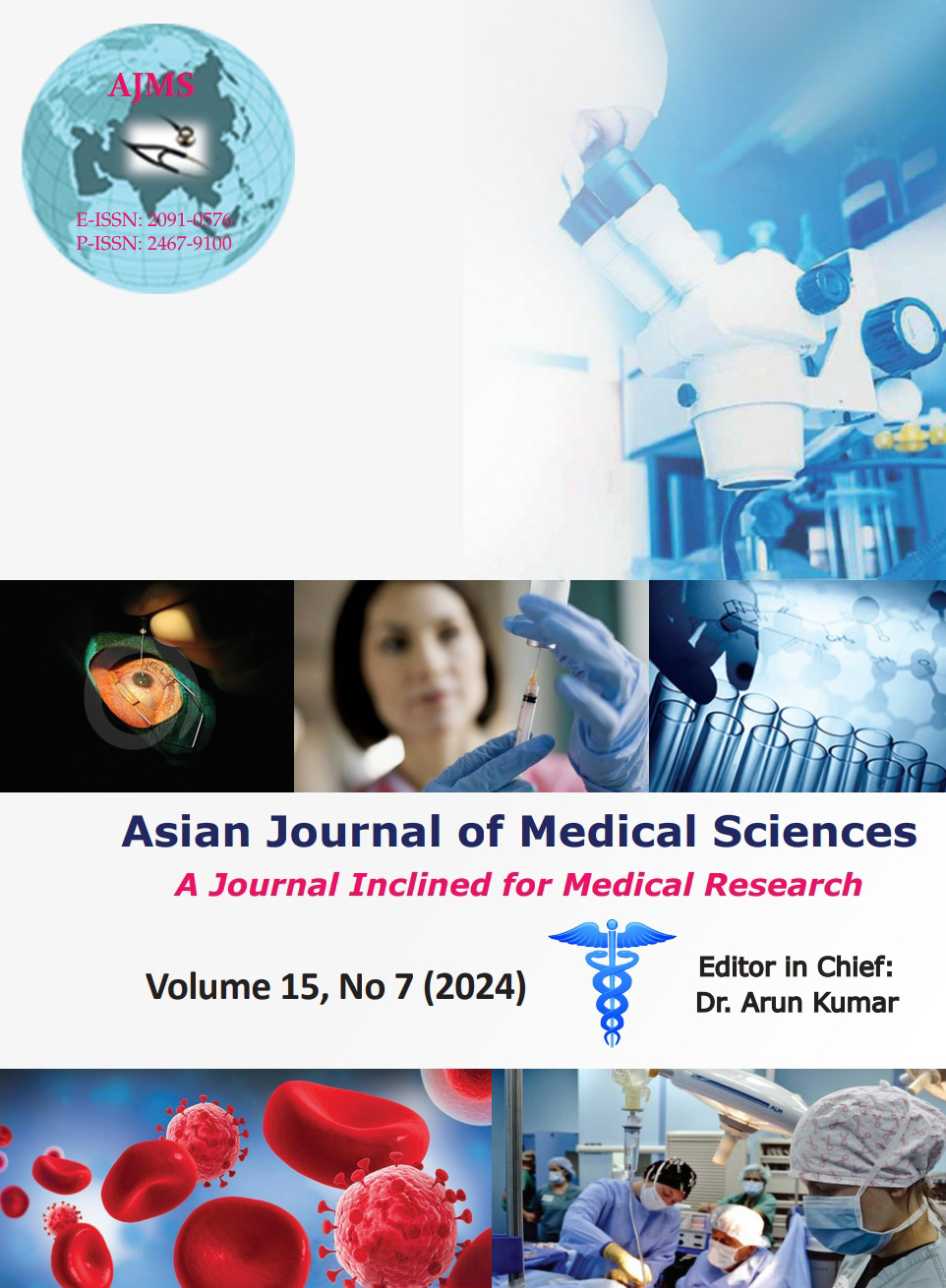Advanced serological tests – A paradigm shift in the diagnosis of febrile illnesses even with some atypical manifestations
Keywords:
Serological test; Enzyme-linked immunosorbent assay; Dengue; CoinfectionAbstract
Background: Fever is a symptom, not a disease. It is the non-specific manifestation of several underlying illnesses.
Aims and Objectives: The aims and objectives of this study were to determine the serological profile of patients with febrile illnesses, to study their different unusual presentations, and to study patients with coinfections with more than one type of disease.
Materials and Methods: Blood samples from 15,000 febrile patients were collected during the study period of 6 months. Different serological tests were performed in our laboratory based on clinical suspicion and in a few patients, more than one type of tests were done. The unusual presentations of different diseases were studied.
Results: Various percentages of male and female patients were seen suffering from different types of febrile illnesses. The different positive results out of total tests done for respective diseases were dengue (848/7708), vivax malaria (64/800), falciparum malaria (4/800), leptospirosis (95/798), scrub typhus (77/2433), enteric fever (75/1506), hepatitis B (143/9368), hepatitis C (11/9368), human immunodeficiency virus (HIV) (37/10900), systemic lupus erythematosus (5/158), acute renal failure (66/158), and syphilis (54/583). Different unusual presentations among patients with several diseases were noted, along with their percentages of occurrence. Coinfections among dengue and enteric fever (3%), mixed infection with Plasmodium vivax and Plasmodium falciparum (0.25%), scrub typhus and Leptospira (15.6%), hepatitis B and hepatitis C (0.649%), hepatitis B and HIV (5%), hepatitis C and HIV (8.33%), and syphilis and HIV (27.68%).
Conclusion: Dengue fever was found to be the most common of all febrile illnesses. The different unusual presentations of those diseases should suggest an improved clinical suspicion and better diagnostic stewardship. Coinfection was most commonly seen among syphilis and HIV and these data must suggest to always looking for associated illnesses in a patient with a single diagnosis.
Downloads
Downloads
Published
How to Cite
Issue
Section
License
Copyright (c) 2024 Asian Journal of Medical Sciences

This work is licensed under a Creative Commons Attribution-NonCommercial 4.0 International License.
Authors who publish with this journal agree to the following terms:
- The journal holds copyright and publishes the work under a Creative Commons CC-BY-NC license that permits use, distribution and reprduction in any medium, provided the original work is properly cited and is not used for commercial purposes. The journal should be recognised as the original publisher of this work.
- Authors are able to enter into separate, additional contractual arrangements for the non-exclusive distribution of the journal's published version of the work (e.g., post it to an institutional repository or publish it in a book), with an acknowledgement of its initial publication in this journal.
- Authors are permitted and encouraged to post their work online (e.g., in institutional repositories or on their website) prior to and during the submission process, as it can lead to productive exchanges, as well as earlier and greater citation of published work (See The Effect of Open Access).




